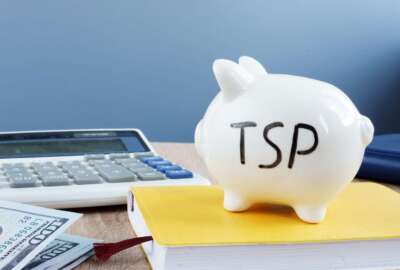Military member enrollment in TSP’s blended retirement system reaches record high
For the first time since the program's launch in 2018, the number of BRS participants surpassed the number of participants in the military’s legacy retirement...
After five years in effect, the Thrift Savings Plan’s Blended Retirement System (BRS) for military members is seeing record levels of program participation.
The relatively new retirement system, which many military members got access to as part of the fiscal 2016 National Defense Authorization Act, offers a “blend” of two major sources of retirement income: a traditional retirement pension and a TSP account.
In September, for the first time since the launch of the program in 2018, the number of BRS participants surpassed the number of participants in the military’s legacy retirement system. Currently, there are 1.31 million BRS participants and 1.29 million participants in the legacy system, the Federal Retirement Thrift Investment Board (FRTIB) reported Tuesday.
The tipping of the scales was inevitable. After the military transitioned to the new system in 2018, it became mandatory for all new members. And up until the end of 2018, service members on the legacy system with 12 or fewer years of service had the option to switch into BRS.
Still, the change is significant, FRTIB board members said.
The BRS “puts newer members of the uniformed services on the same footing as most people in the civilian workforce,” Jim Courtney, director of FRTIB’s Office of Communications and Education, said during FRTIB’s monthly meeting Tuesday. “Members who separate after four years or six years or 10 years have a TSP balance in the same way most civilians in the same age group would have a 401K balance when switching jobs.”
In the military’s legacy retirement system, service members have to put in 20 years of service to qualify for a pension, also known as a “defined benefit.” Members in the legacy system can open a TSP account if they choose to, but they do not receive matching contributions from the government.
In contrast, BRS participants are now auto-enrolled in TSP after 60 days of service. After two years of service, BRS participants can start receiving matching contributions.
When Congress opted to switch the retirement system for newer military members, the goal of BRS was to offer better retirement savings options to the many military members who don’t end up reaching the 20 years of service needed to qualify for a military pension.
“Most members of the uniformed services do not serve 20 years,” Courtney said. “Under the legacy uniformed services system, most of those participants were walking away with a smaller balance and not collecting the defined benefit either.”
Notably, BRS participants who do end up putting in 20 years of service receive a pension that’s reduced by 20%, but Courtney said the trade-off is theoretically having a larger TSP balance.
More military members receiving full matching rate
Along with bigger enrollment numbers, FRTIB also reported a record high 84.9% of BRS participants who are now receiving a full matching contribution rate from the military in their TSP accounts.
A little over a year ago, that rate was at 69% for BRS participants who were receiving the full match from the military.
Courtney credited the high number of participants who receive the full matching rate to the FRTIB’s switch in 2020 to auto-enroll participants at 5% contribution rate, rather than the previous 3%.
By setting a baseline of a 5% contribution rate for participants, the percentage of participants receiving the full matching rate can grow more easily.
Both BRS participants and civilian TSP participants receive a dollar-for-dollar match from their agency or military service on the first 3% of contributions. The next 2% is matched at 50 cents on the dollar.
All told, if participants contribute 5% of their basic pay toward TSP, they will receive a 5% match as a combination of government contributions equal to 4% of basic pay, plus an automatic 1% contribution, FRTIB explains.
FRTIB is encouraging more TSP participants who joined the program prior to 2020 to bump up their contributions to 5%, if they haven’t already.
BRS participant satisfaction still lags
Although numbers are increasing for FRTIB’s BRS program, there is still a disparity when it comes to BRS participants’ satisfaction in the TSP overall.
In 2022, an TSP participant satisfaction survey that FRTIB conducted showed that 77% of BRS participants were highly satisfied with TSP, compared with an 87% satisfaction rate across all TSP participants. The survey received 115 total responses from BRS participants.
“BRS participants are the least likely to recommend the TSP — with only 29% extremely likely to recommend the TSP to an eligible friend or associate,” FRTIB said in the 2022 survey results, the most recent data publicly available. “This is a 21-point decrease from 2021 among BRS participants.”
Compared with TSP participants overall, BRS participants are also least satisfied with the flexibility of withdrawal options. And they are more likely to think TSP fees are not among the lowest, FRTIB said.
Notably, new members who are auto-enrolled in BRS when they join the military are significantly less satisfied than military members who opted to join the program in 2018.
“This result is not surprising as those who made the decision to elect or opt into the TSP did so with the understanding of the benefits of the plan,” FRTIB said.
At the same time, BRS participants are also most likely of any subset of TSP participants to not have another qualified retirement plan or traditional IRA outside of TSP. The survey showed that 58% of BRS participants only have a TSP account.
Copyright © 2025 Federal News Network. All rights reserved. This website is not intended for users located within the European Economic Area.
Drew Friedman is a workforce, pay and benefits reporter for Federal News Network.
Follow @dfriedmanWFED






